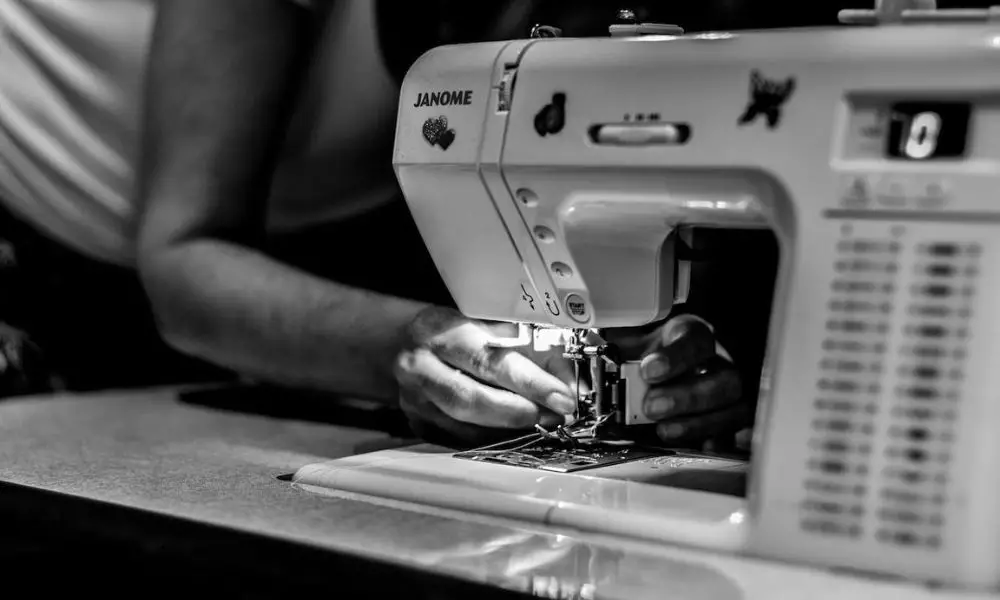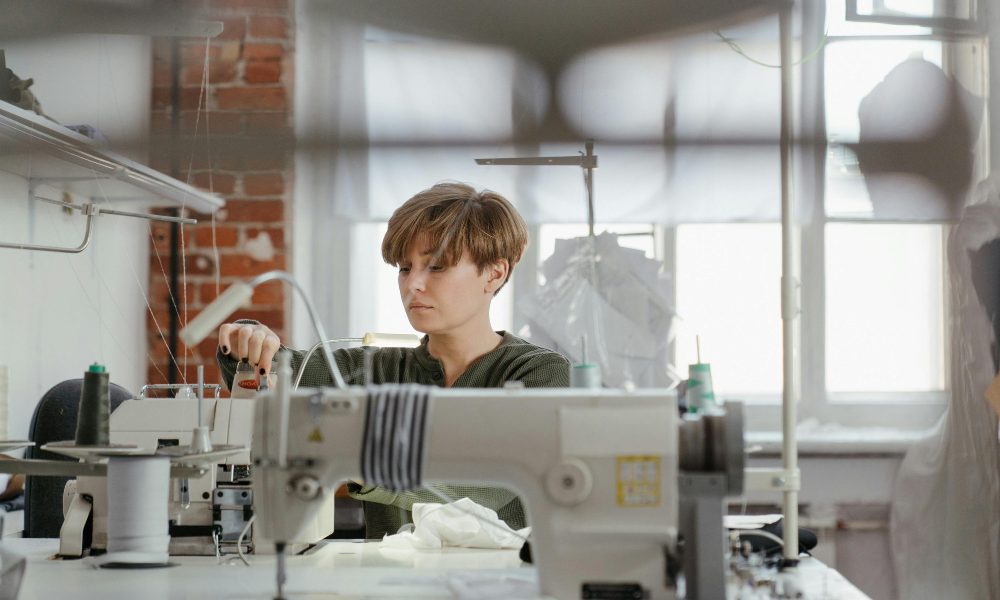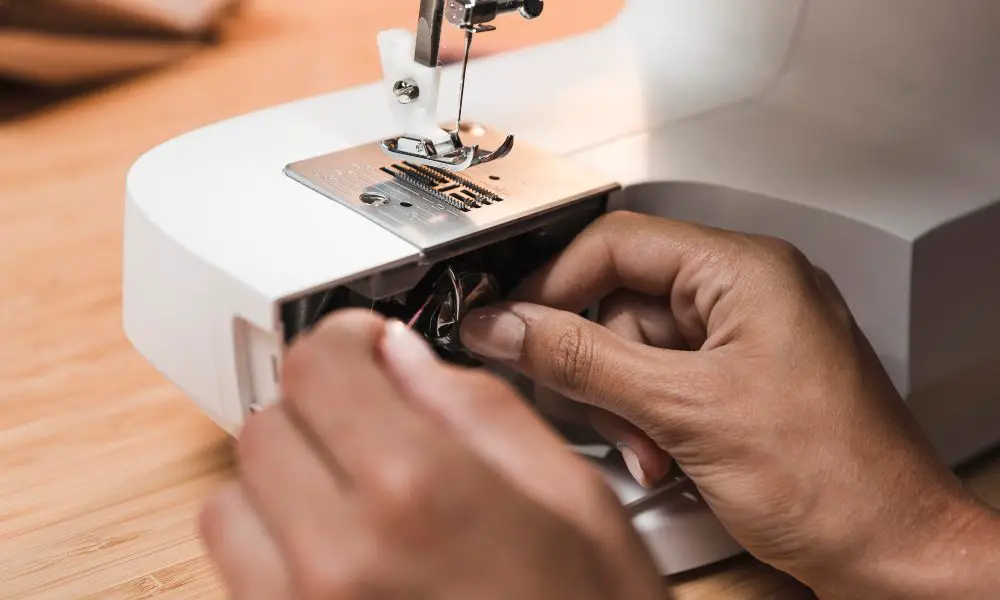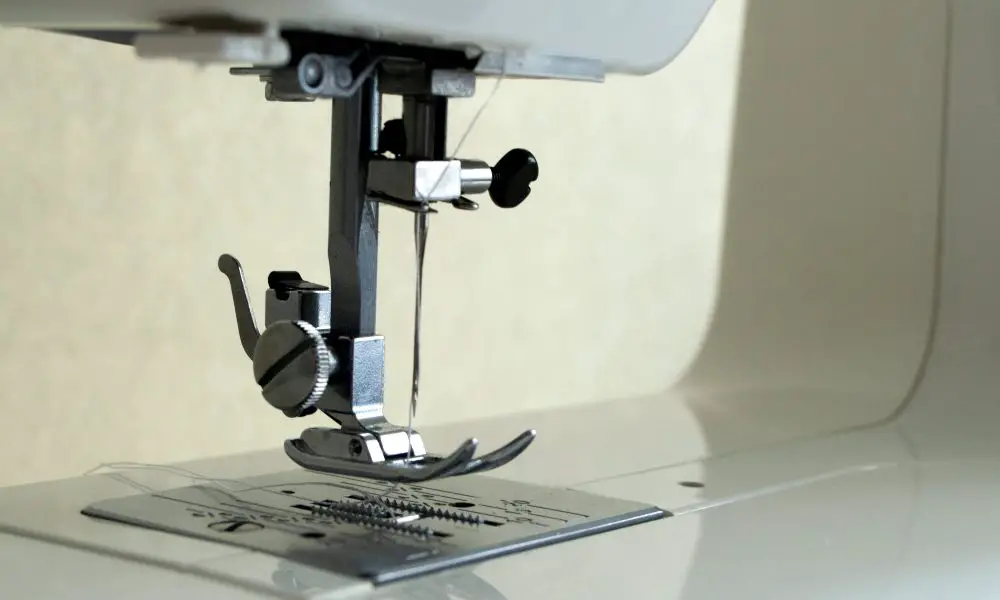Sewing machines are a staple in any sewer’s toolkit, but what happens when your machine won’t turn on? It can be frustrating and confusing, especially if you’re in the middle of a project. There are several reasons why a sewing machine may not turn on, and it’s important to know what to look for to fix the issue.
One common reason why a sewing machine won’t turn on is due to a power supply failure. This can be caused by a bad outlet cord, a failed On/Off switch, or a tripped circuit breaker. Before using your sewing machine, always check the outlet by plugging a small appliance like a lamp in to ensure it’s working properly. If the outlet is working correctly, but the machine still won’t turn on, it’s time to investigate further.
Another reason why a sewing machine may not turn on is due to a problem with the cord. If the cord is not plugged in correctly or is damaged, the machine won’t receive power. It’s important to check the cord for any damage or fraying and ensure that it’s plugged in properly. If the cord is damaged, it will need to be replaced.
Understanding Your Sewing Machine
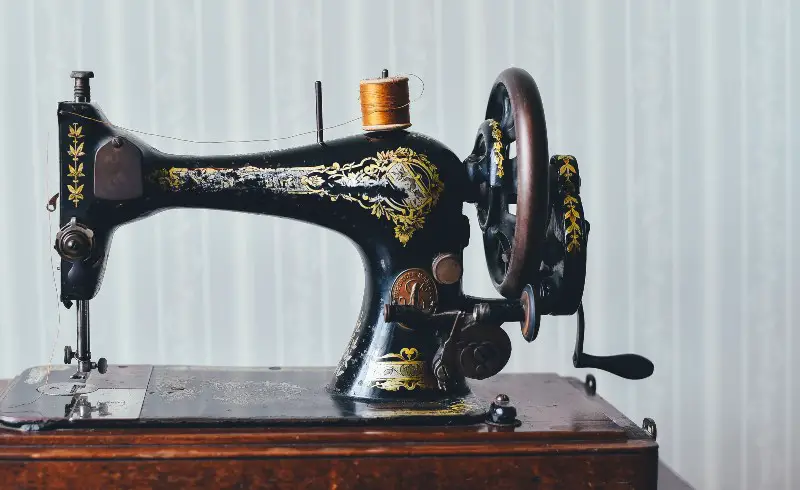
A sewing machine requires careful handling and maintenance to function properly. Understanding the different parts of your sewing machine and how they work together is essential for troubleshooting issues and preventing future problems.
One of the most important parts of a sewing machine is the needle. The needle pierces the fabric to create stitches. A bent or dull needle can cause skipped stitches or uneven stitching. It’s important to use the correct needle for your fabric type and to change your needle regularly to prevent damage.
Another crucial component of a sewing machine is the tension system. The tension system controls the amount of thread that is pulled through the fabric. If the tension of the thread is not adjusted correctly, it can cause problems such as thread breakage, skipped stitches, or puckering of the fabric. It’s important to adjust the tension correctly for each fabric type and to check it regularly.
The bobbin is another important part of a sewing machine. The bobbin is a diminutive spool that contains the thread located underneath. It’s important to use the correct type of bobbin for your machine and to ensure that it’s wound correctly. If the bobbin is not inserted correctly or is not wound properly, it can cause issues such as thread bunching or uneven stitches.
The part of the sewing machine that holds the fabric in place while stitching is called the presser foot. It’s important to use the correct presser foot for each fabric type and to ensure that it’s clean and functioning properly. A damaged or dirty presser foot can cause issues such as uneven stitching or fabric slippage.
Finally, the foot pedal is the part of the sewing machine that controls the speed of stitching. It’s important to use the foot pedal correctly and to ensure that it’s functioning properly. If the foot pedal is not working correctly, it can cause issues such as uneven stitching or thread breakage.
By understanding the different parts of your sewing machine and how they work together, you can troubleshoot issues and prevent future problems. It’s also important to refer to your sewing machine manual for specific instructions and maintenance tips.
Common Reasons for Sewing Machine Not Turning On
There are several reasons why a sewing machine may not turn on. Here are some of the most common reasons:
- Power supply failure: If your sewing machine does not turn on, the first thing to check is the power supply. To ensure the outlet is working, try plugging a lamp or small appliance into the same electrical outlet as your sewing machine. If the outlet is functional, double-check that the power cord is firmly connected to both the machine and the outlet.
- Bad outlet cord: A bad outlet cord can also prevent the sewing machine from powering up. Inspect the cord for any indications of damage or fraying. If the cord shows signs of damage, it should be replaced.
- Failed on/off switch: If the power supply and outlet cord are working properly, the next thing to check is the on/off switch. A failed on/off switch can prevent the sewing machine from turning on. Check the switch to make sure it is in the “on” position and functioning properly.
- Tripped breaker: Breakers can trip and shut off the power supply to your outlets. If your sewing machine does not turn on, don’t assume it is a problem with your sewing machine. Try pushing the reset button on your outlet to restore power or check your breaker box.
If none of these solutions work, it may be time to take your sewing machine to a repair shop. A professional can diagnose and fix the problem, whether it’s a faulty motor or a more complex electrical issue.
It’s important to note that attempting to repair a sewing machine yourself can be dangerous and may cause further damage to the machine. Always follow the manufacturer’s instructions and consult a professional if you’re unsure about any repairs.
In summary, there are several common reasons why a sewing machine may not turn on, including power supply failure, bad outlet cord, failed on/off switch, and tripped breaker. If none of these solutions work, it may be time to seek professional help.
Power and Electrical Issues
When a sewing machine doesn’t turn on, it’s often due to power and electrical issues. Here are some possible causes and solutions:
- Power outlet issues: Make sure that the sewing machine is plugged into a working power outlet. Plug in another device to test if the outlet works. Reset circuit breaker or outlet reset button if it doesn’t.
- Power cord issues: Check that the power cord is securely plugged into the machine and the power outlet. If the cord is loose, the machine may not turn on. Also, inspect the cord for any visible damage. If the cord is damaged, it should be replaced.
- Foot pedal issues: If the sewing machine is not turning on when the foot pedal is pressed, there may be an issue with the pedal. Check that the pedal is connected to the machine properly and that the cord is not damaged. If the pedal is not working, it may need to be replaced.
- On/off switch issues: If the sewing machine has an on/off switch, make sure that it is in the “on” position. If the switch is not working, it may need to be replaced.
- Internal wiring issues: If none of the above solutions work, there may be an issue with the internal wiring of the sewing machine. This can be a more complex issue to diagnose and fix, and may require the help of a professional.
It’s important to note that electrical issues can be dangerous and should be approached with caution. If you are unsure about how to diagnose or fix an electrical issue with your sewing machine, it’s best to seek the help of a professional.
Thread and Needle Related Issues
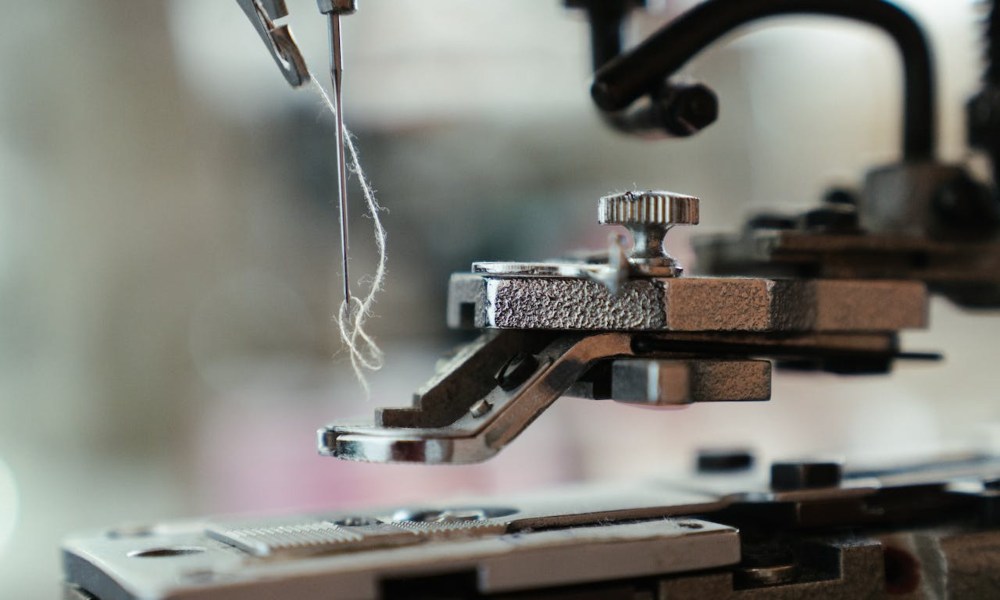
One of the most common reasons why a sewing machine may not turn on is due to thread and needle related issues. If the thread is not correctly threaded or the needle is not inserted properly, the machine may not turn on. Additionally, if the needle is bent, it may not be able to properly catch the thread, causing the machine to not turn on.
Sometimes, skipped stitches can happen when using a thread and needle. This occurs when the machine doesn’t catch the thread, resulting in gaps in the stitches. There could be a few reasons for this, including a bent needle, the wrong needle size, or incorrect threading. To fix this issue, the needle should be replaced, and the machine should be rethreaded properly.
Thread tension can also cause issues with the machine turning on. If the thread tension is too tight or too loose, the machine may not be able to properly catch the thread, causing it to not turn on. To fix this issue, the thread tension should be adjusted according to the type of fabric being used.
It is also important to ensure that the bobbin and bobbin thread are properly inserted. If the bobbin is not inserted correctly, the machine may not turn on. Additionally, if the bobbin thread is not properly threaded, the machine may not be able to properly catch the thread, causing it to not turn on.
In summary, thread and needle related issues can cause a sewing machine to not turn on. Proper threading, needle insertion, and bobbin placement are all important factors to consider. If the machine is still not turning on, it may be necessary to seek professional sewing machine repair services.
Tension Problems
One of the most common issues with sewing machines is tension problems. Tension is the amount of pressure applied to the thread as it passes through the machine. Proper tension is critical to achieving even, balanced stitches. If the tension is too tight or too loose, it can cause a variety of issues.
There are two types of tension on a sewing machine: upper tension and bobbin tension. Upper tension is controlled by the tension dial on the machine, while bobbin tension is controlled by the bobbin casing. If either of these is off, it can cause tension problems.
One common tension problem is skipped stitches. This occurs when the machine misses stitches, leaving gaps in the fabric. Skipped stitches can be caused by a variety of issues, including improper tension. If the upper tension is too loose, it can cause the thread to pull out of the fabric, resulting in skipped stitches. On the other hand, if the upper tension is too tight, it can cause the fabric to pucker and the thread to break.
Another tension problem is uneven stitches. This occurs when the stitches are not uniform in size or shape. Uneven stitches can be caused by a variety of issues, including improper tension. If the upper tension is too loose, it can cause loose, uneven stitches. If the upper tension is too tight, it can cause tight, puckered stitches.
To fix tension problems, start by checking the tension settings on your machine. Make sure the upper tension dial is set to the correct number for the fabric you are using. If you are using a different type of thread than usual, you may need to adjust the tension accordingly.
If adjusting the tension doesn’t solve the problem, there may be an issue with the tension discs or bobbin casing. Check the machine manual for instructions on how to clean and maintain these parts. Lint and debris can accumulate in these areas, causing tension problems.
In summary, tension problems are a common issue with sewing machines that can cause skipped stitches and uneven stitches. Proper tension is critical to achieving even, balanced stitches. If you are experiencing tension problems, start by checking the tension settings on your machine and cleaning the tension discs and bobbin casing.
Stitching and Fabric Issues

One of the most common reasons for a sewing machine not stitching correctly is that it is not threaded correctly with the right combination of thread, needle type, and fabric. Using the wrong thread or needle type for the fabric can cause stitching issues, such as skipped stitches, uneven stitches, or even thread breaks. It is important to use the correct needle type for the fabric you are sewing on.
Stretch fabrics, for example, require a ballpoint needle, while woven fabrics require a sharp needle. Using the wrong needle type can cause skipped stitches or even damage to the fabric. It is also important to use the correct thread tension for the fabric being sewn. Improper thread tension can lead to stitching problems like puckering or thread breaks.
Another common issue is with stitch length. If the stitch length is too short or too long, it can cause uneven or loose stitches respectively. It is important to adjust the stitch length according to the fabric being sewn.
In addition, using a damaged or bent needle can cause stitching issues. A bent needle can cause the fabric to be pulled out of shape, resulting in uneven stitches. It is important to replace the needle regularly, especially if it becomes damaged or dull.
Overall, stitching and fabric issues can cause a sewing machine to not stitch correctly. It is important to use the correct needle type, thread tension, and stitch length for the fabric being sewn. Additionally, it is important to replace the needle regularly and use a needle that is not damaged or bent.
Problems with Machine Parts
If your sewing machine is not turning on, one possible culprit could be a problem with one of its parts. Here are some common parts that may be causing the issue:
Presser Foot
The presser foot holds the fabric in place as it moves through the machine. If the presser foot is not properly attached or is damaged, the machine may not turn on. Check to make sure the presser foot is securely attached and not damaged.
Needle Plate
The needle plate, located under the needle, guides fabric through the machine. If the needle plate is loose or damaged, the machine may not turn on. Check to make sure the needle plate is securely attached and not damaged.
Tension Disc
The tension disc regulates the tension on the thread as it moves through the machine. If the tension disc is not properly set or is damaged, the machine may not turn on. Check to make sure the tension disc is properly set and not damaged.
Bobbin Casing
The bobbin casing holds the bobbin and regulates the tension on the bobbin thread. If the bobbin casing is not properly set or is damaged, the machine may not turn on. Check to make sure the bobbin casing is properly set and not damaged.
Hand Wheel
The hand wheel is used to manually move the needle up and down. If the hand wheel is not properly set or is damaged, the machine may not turn on. Check to make sure the hand wheel is properly set and not damaged.
Needle Bar
The needle bar holds the needle in place and moves it up and down. If the needle bar is not properly set or is damaged, the machine may not turn on. Check to make sure the needle bar is properly set and not damaged.
Lint
Lint can accumulate in the machine and cause it to malfunction. If the machine is not turning on, check to make sure there is no lint buildup in the machine. Clean the machine thoroughly and try turning it on again.
In summary, a problem with any of these parts could be causing your sewing machine to not turn on. Check each part to make sure it is properly set and not damaged. Clean the machine of any lint buildup and try turning it on again.
Frequently Asked Questions
How do I troubleshoot a sewing machine that won’t turn on?
If your sewing machine won’t turn on, there are a few troubleshooting steps you can take. Firstly, check if the power cord is securely plugged into the outlet. If it is, ensure that the outlet is functioning properly by plugging in another device.
If the outlet is fine, check the power switch on the sewing machine. Make sure that it is turned on and that the machine is properly plugged in. If none of these steps work, then you may need to take your machine to a repair service.
What could be causing my sewing machine to not start?
There are several reasons why your sewing machine may not start. The most common reason is a power supply failure. This can be caused by a bad outlet cord or a failed On/Off switch.
Another reason could be a blown fuse or tripped circuit breaker. Additionally, the sewing machine motor could be burned out or the wiring may be damaged.
Are there any common reasons why a sewing machine won’t turn on?
Yes, there are several common reasons why a sewing machine won’t turn on. One of the most common reasons is a loose or disconnected power cord. Another common cause is a blown fuse or a tripped circuit breaker.
A faulty On/Off switch can also prevent the sewing machine from turning on. It is also possible that the motor or wiring of the sewing machine is damaged.
How can I fix my sewing machine’s power switch?
If the power switch on your sewing machine is not working, it may need to be replaced. To do this, you will need to take the machine apart and remove the old switch. Then, you can install the new switch and reassemble the machine.
If you are not comfortable doing this yourself, you can take your sewing machine to a repair service.
What should I do if my Singer sewing machine won’t sew?
If your Singer sewing machine won’t sew, there are a few things you can try. Firstly, check that the needle is properly inserted and that it is the correct size for the fabric you are using.
Additionally, check the bobbin to ensure that it is properly inserted and that the thread is feeding correctly. If these steps don’t work, you may need to take your machine to a repair service.
Where can I find a repair service for my non-working sewing machine?
If your sewing machine is not working, you can take it to a local sewing machine repair service. You can also check online for repair services in your area.
Additionally, some sewing machine manufacturers offer repair services for their machines. Check your sewing machine manual or the manufacturer’s website for more information.
Remember to always unplug your sewing machine before attempting any repairs or troubleshooting. If you are not comfortable working on your machine, take it to a professional repair service.
Conclusion
To sum up, there could be various reasons why a sewing machine is not turning on. The probable causes could be a power supply failure, a faulty outlet cord, or a failed on/off switch.
It is advisable to check the power supply first and test the outlet by plugging in a lamp or another small device to ensure that it is functioning properly before attempting to use the sewing machine.
If the power supply is not the issue, it may be due to a frozen sewing machine. This can be caused by several things, including lint buildup, a bent needle, or uneven stitches. To fix a frozen sewing machine, remove the cover from the machine and investigate further. Unscrew the top, bottom, and side covers to remove them from the sewing machine.
Another reason why a sewing machine may not turn on is due to a loose connection. A tell-tale sign that your sewing machine cord has come loose is that your lightbulb will flicker or not turn on.
If your sewing machine is running slowly, check your cord. There are two connection points to check — at your outlet and at your machine. Make sure that neither connection has come loose.
Lastly, it is important to remember that if your sewing machine does not turn on, don’t assume it is a problem with your sewing machine. Try pushing the reset button on your outlet to restore power or check your breaker box. You can also plug another electrical device into your power outlet to see if it is working.
By following these simple steps, you can troubleshoot why your sewing machine is not turning on and get back to sewing in no time.
***
Main image: Pexels

